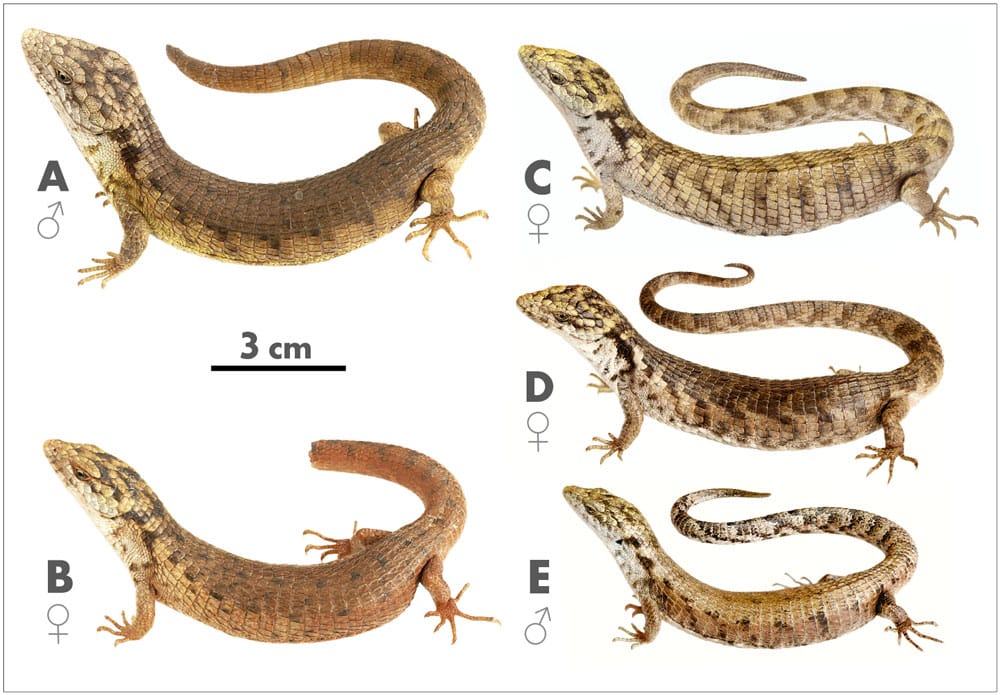Abronia cunemica sp. nov. is an arboreal lizard from the Northern Highlands of Chiapas, Mexico.
Researchers have discovered and described a new species of alligator lizard of the Abronia genus from the Northern Highlands of Chiapas, Mexico. The reptile differs from other lizards in the Abronia genus in that it lacks “protuberant or spine-like supra-auricular scales, lack of protuberant or casque-like posterolateral head scales, dorsum of head pale yellow with distinct dark markings, 35–39 transverse dorsal scale rows, lateralmost row of ventral scales enlarged relative to adjacent medial row, and dorsum brown with darker crossbands that are sometimes reduced to rows of spots.”
The researchers have provisionally placed Abronia cunemica sp. nov in the subgenus Lissabronia. They base this on genomic and morphological evidence. They also suggest the species has a close relationship with the Abaculabronia subgenus. The Central Depression of Chiapas geographically separates the species from those in the Lissabronia and Abaculabronia subgenus.
Male Southern Alligator Lizards Clamp The Heads Of Their Mates For Hours During Courtship
New Alligator Lizard Species Discovered And Described
The researchers conducted several years of fieldwork in the Northern Highlands of Chiapas, investing 350 search hours and capturing five lizards that the researchers believed to be a new species of arboreal alligator lizard. They then ran genetic testing against other Abronia species in the clade and determined that the lizard was a species new to science.

Color variation in preservative (ethanol after formalin) in dorsal and ventral view of type series of Abronia cunemica sp. nov. from Coapilla, Chiapas, Mexico. From left to right: adult male holotype, MZFC-HE 36544 (AGC 1428), 127 mm snout-to-vent length (SVL); adult female paratype, MZFC-HE 36545 (AGC 1429), 113 mm SVL; juvenile male paratype, MZFZ 4512 (AGC 1484), 91 mm SVL; adult female paratype, MZFZ 4513 (AGC 1491), 107 mm SVL; and adult female paratype, MZFZ 4514 (AGC 1492), 110 mm SVL. Photographs by Israel Solano-Zavaleta
The male lizards have a snout to vent length of 127mm, with the female paratype having a 113 mm SVL. The body is a medium brown blending to a pale yellow on the lateral nuchals and “dull lemon yellow with brown flecks on the flanks.” The forelimbs and hindlimb are rusty brown with dark brown flecking and blotching. The tail is the same coloration as the body. The lizards were found 3.5 to 19.5 meters high on tree limbs of Pinus chiapensis trees. they also found a mating pair on the forest floor that the researchers presumed fell during the courtship bite hold that this species is known for.
The complete paper, “‘Bridging the gap: A new species of arboreal Abronia (Squamata: Anguidae) from the Northern Highlands of Chiapas, Mexico” can be read on the open access PLOS One Journal website.



